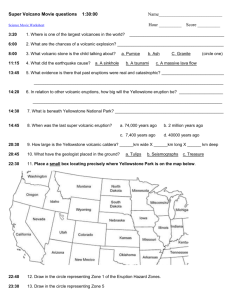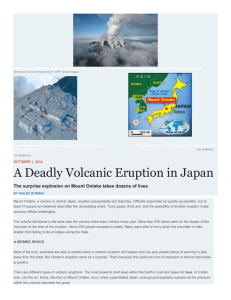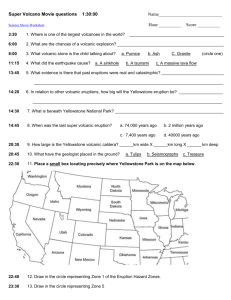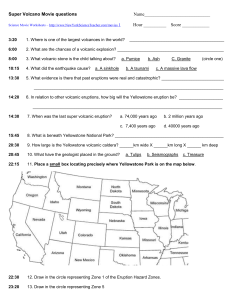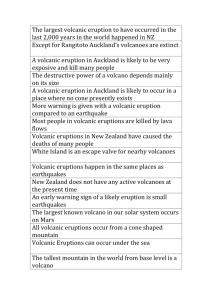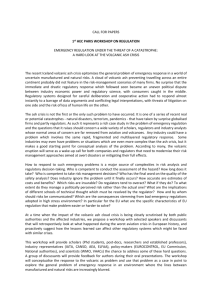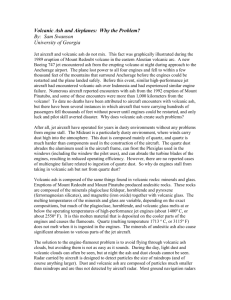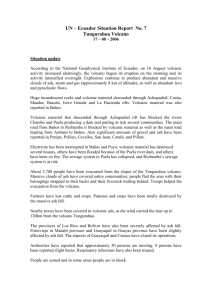IVATF.4.DP.007.7.en
advertisement
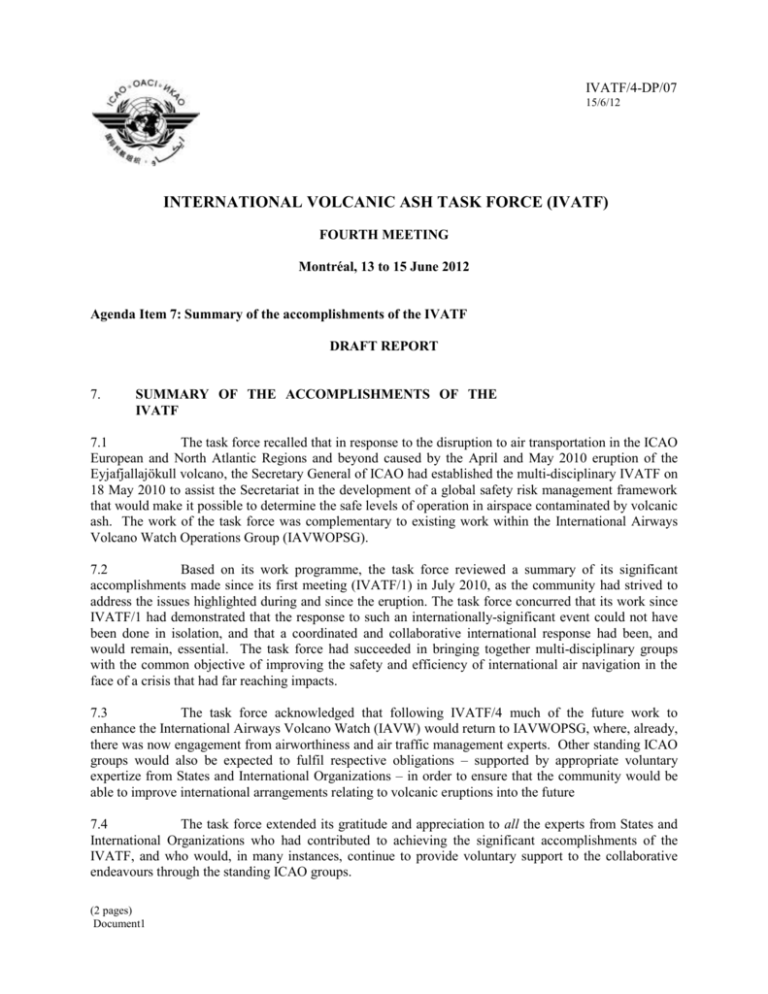
IVATF/4-DP/07 15/6/12 INTERNATIONAL VOLCANIC ASH TASK FORCE (IVATF) FOURTH MEETING Montréal, 13 to 15 June 2012 Agenda Item 7: Summary of the accomplishments of the IVATF DRAFT REPORT 7. SUMMARY OF THE ACCOMPLISHMENTS OF THE IVATF 7.1 The task force recalled that in response to the disruption to air transportation in the ICAO European and North Atlantic Regions and beyond caused by the April and May 2010 eruption of the Eyjafjallajökull volcano, the Secretary General of ICAO had established the multi-disciplinary IVATF on 18 May 2010 to assist the Secretariat in the development of a global safety risk management framework that would make it possible to determine the safe levels of operation in airspace contaminated by volcanic ash. The work of the task force was complementary to existing work within the International Airways Volcano Watch Operations Group (IAVWOPSG). 7.2 Based on its work programme, the task force reviewed a summary of its significant accomplishments made since its first meeting (IVATF/1) in July 2010, as the community had strived to address the issues highlighted during and since the eruption. The task force concurred that its work since IVATF/1 had demonstrated that the response to such an internationally-significant event could not have been done in isolation, and that a coordinated and collaborative international response had been, and would remain, essential. The task force had succeeded in bringing together multi-disciplinary groups with the common objective of improving the safety and efficiency of international air navigation in the face of a crisis that had far reaching impacts. 7.3 The task force acknowledged that following IVATF/4 much of the future work to enhance the International Airways Volcano Watch (IAVW) would return to IAVWOPSG, where, already, there was now engagement from airworthiness and air traffic management experts. Other standing ICAO groups would also be expected to fulfil respective obligations – supported by appropriate voluntary expertize from States and International Organizations – in order to ensure that the community would be able to improve international arrangements relating to volcanic eruptions into the future 7.4 The task force extended its gratitude and appreciation to all the experts from States and International Organizations who had contributed to achieving the significant accomplishments of the IVATF, and who would, in many instances, continue to provide voluntary support to the collaborative endeavours through the standing ICAO groups. (2 pages) Document1 IVATF/4-DP/07 -2- 7.5 The task force acknowledged that the challenges faced during and since the eruption of Eyjafjallajökull had been, in many instances, significant. Experts had worked diligently to address the issues highlighted by this and other significant eruptions to the extent possible, and there was now a much-improved understanding and awareness of the hazards posed by volcanic ash in the atmosphere on continued safe and efficient flight operations, across multiple disciplines. 7.6 Undoubtedly, some challenges remain, and the task force concurred that these challenges presented opportunities to further extend the community’s collaborative scientific understanding and operational response to volcanic eruptions, wherever and whenever in the world they would occur. 7.7 The task force recognized that it had accomplished its principle objective – the development of a global safety risk management framework that makes it possible to determine the safe levels of operation in airspace contaminated by volcanic ash – and the task force was tremendously proud of this and its other significant accomplishments during the past 24 months. 7.8 The task force concurred that the summary of the accomplishments of the task force should form the basis of an executive summary of the IVATF as a whole, and used as a communication tool post-IVATF. ————————

